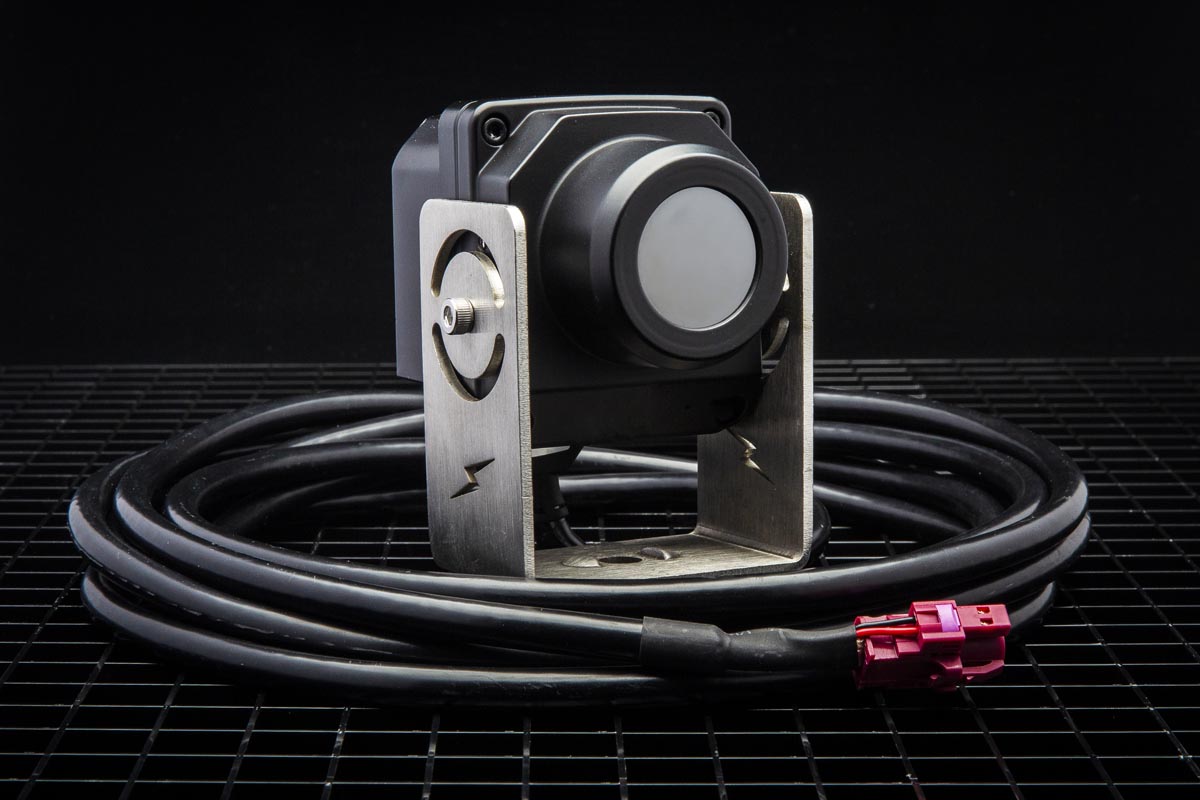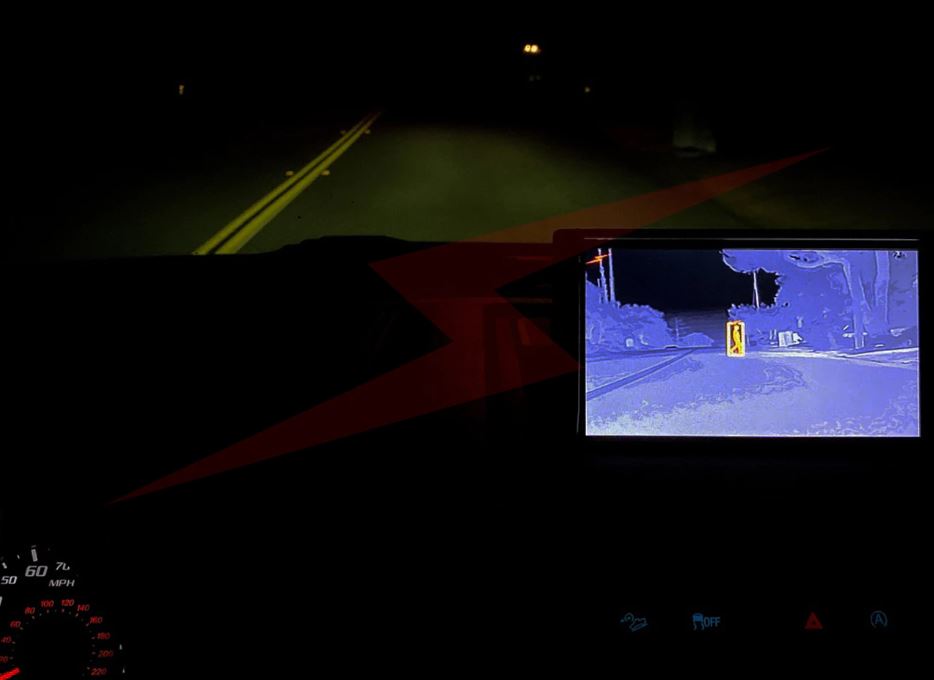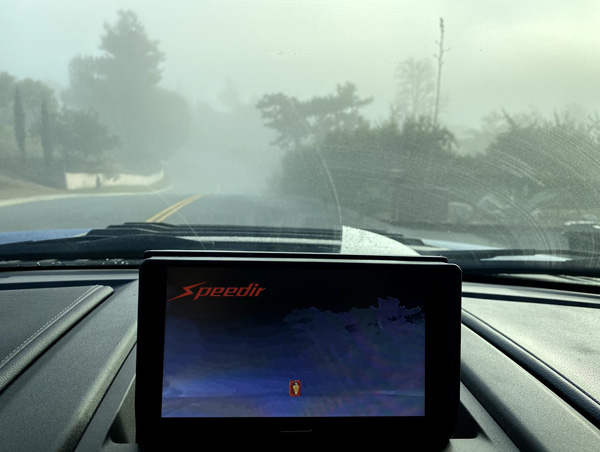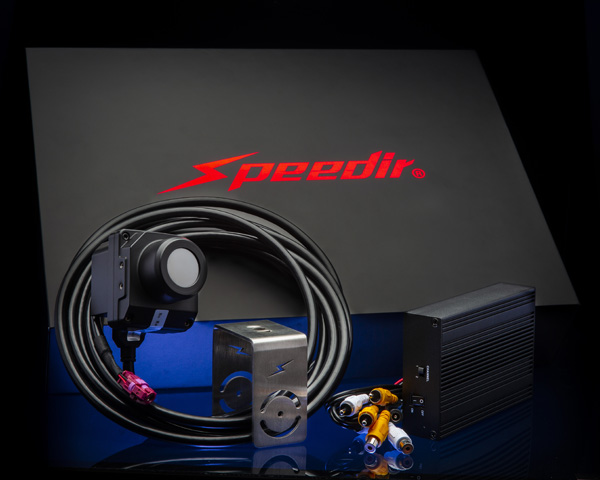Tips for Choosing The Best Thermal Camera
Posted by Speedir Thermal Vision on 22nd May 2020
Updated March 2023
5 Tips to Find the Best Thermal Camera for Your Vehicle

A high-quality thermal imaging camera can be a very useful addition to your
technology toolkit. Originally designed by the United States military, these
cameras are frequently used for everything from night surveillance to pest
control. They can even detect infections, find electrical defects in your
wiring, and identify blockages in your HVAC system. If you're having difficulty
seeing everything on the road at night, using a thermal camera that fits inside of your car
can give you much better visibility than traditional headlights.
Like any other piece of technology, not all thermal cameras are created equal.
Because these cameras have such a wide range of applications, thermal camera
manufacturers make many different models for many different purposes.
In this handy guide, we'll be discussing the principles behind how thermal
imaging technology works and sharing our top five tips for choosing the best
thermal camera to keep you safe on the road. Let's get started.
Tip #1: Make Sure You Understand the Basics Before You Focus on Advanced Features
Thermal imaging is pretty amazing technology, and it can be easy to get caught
up in all of the advanced things that a high-end model can do. At the end of
the day, all thermal cameras run on the same basic principles. First, the
camera uses a lens to focus on the infrared light that is emitted by objects in
the surrounding area. This light then passes through an arrangement of
detectors that are located inside of the device.
As these detection units receive the infrared light from the lens, they use
this input data to reconstruct the temperature profile of the outside
environment. The temperature profile is then converted into electrical energy,
and this electrical energy is fed through the camera's circuit board and then
on to the display screen.
Tip #2: Narrow Down Your Options by Making a List of the Capabilities That You'll Need From Your Thermal Camera
 When it comes to choosing a thermal camera for your vehicle, you'll want to
consider what kind of low-light environments you end up driving in the most. Do
you do a lot of camping in the mountains?
Do you frequently drive your vehicle off of the beaten path? After you've
thought a bit about this, you'll want to drill down on the technical specs that
you'll require from your imaging system. How wide does the camera's field of
vision need to be? What kind of resolution will you need? Is getting a general
picture of the road enough to keep you safe, or will you need to see all of the
finer details of your environment to avoid small animals and potholes? Could
you benefit from having a camera with artificial intelligence?
When it comes to choosing a thermal camera for your vehicle, you'll want to
consider what kind of low-light environments you end up driving in the most. Do
you do a lot of camping in the mountains?
Do you frequently drive your vehicle off of the beaten path? After you've
thought a bit about this, you'll want to drill down on the technical specs that
you'll require from your imaging system. How wide does the camera's field of
vision need to be? What kind of resolution will you need? Is getting a general
picture of the road enough to keep you safe, or will you need to see all of the
finer details of your environment to avoid small animals and potholes? Could
you benefit from having a camera with artificial intelligence?
Regardless of whether you're purchasing a thermal imaging camera for your
vehicle or for another purpose, thinking about the details of your personal
situation will put you in a better position to choose the best product for you.
As an aside, these cameras are so versatile that there's no need to stop at
just using one in your vehicle. If you're interested in using a thermal imaging
camera to detect mold on your property, for example, then you'll want to make
sure that the camera can detect moisture. On the other hand, you'll probably
want to consider a military-grade thermal night vision camera if you need a
model for home surveillance. Several home security companies offer systems that
have thermal imaging with night vision, and most of these companies have
installation experts on staff that can come out and set everything up for you.
Tip #3: Spend Some Time Getting Familiar With What Separates the Best Thermal Imaging Cameras From the Rest
Before you dive in and make a purchase, you'll want to understand the testing
standards that each manufacturer uses before they release a product. The Night Owl
Plus, for example, is specifically tested for a 60hz refresh rate,
high-definition output resolution, and a heat detection range of at least 3,000
feet. Regardless of which camera you choose for your vehicle, it's important
that the manufacturer performs rigorous testing to ensure a quality product.
Tip #4: Research Thermal Camera Manufacturers Before You Settle on a Specific Model
 The best thermal imaging manufacturers tend to have one thing in common: Their
cameras are tested extensively in real-world scenarios. Top-tier manufacturers
usually have dedicated R&D departments, and they produce as much of their
technology in-house as possible.
The best thermal imaging manufacturers tend to have one thing in common: Their
cameras are tested extensively in real-world scenarios. Top-tier manufacturers
usually have dedicated R&D departments, and they produce as much of their
technology in-house as possible.
It can be tempting to look at new models from start-up camera producers with
slick marketing, but you'll usually find that the best manufacturers are those
with the most experience. Defining the exact capabilities that you need,
figuring out which large-scale organizations depend on those capabilities, and
then finding out which manufacturers make the cameras that those organizations
use can be a very effective strategy.
To find an IR camera for security, for example, you can look at which
manufacturers the United States military relies on to make their reconnaissance
equipment. If a manufacturer is trusted by a high-performance organization,
then they will usually make a point of saying so on their company website.
Tip #5: Only Buy From a Thermal Camera Company That You Can Fully Trust
It's one thing to be able to trust the company that makes your camera
equipment, but it's another to trust the company that sells it to you. The best
manufacturers don't always sell their own products directly to the consumer, so
you may need to buy the camera that you want from a retailer or a distributor.
Finding a trustworthy retailer doesn't take as much research as finding the
best camera, but some retailers are certainly more reliable than others. Does
the company that's selling you the camera have the expertise to provide real
customer support? What kind of return policy do they offer? If they don't offer
installation services, then will they be able to direct you to a service
provider in the event that you have problems setting up your camera?
These might seem like trivial subjects to think about, but they are all
important things to consider.
Closing Thoughts
Thermal cameras have so many different uses that it's impossible to list them
all. This isn't to say, however, that every model can do everything. Before you
purchase a thermal imaging device for your car, it's extremely important to
research the manufacturer, understand the technical specifications of the model
that you are buying, and buy from a retailer that has your best interest at
heart. If you want a high-quality and affordable thermal imaging camera, buy Night Owl Plus.

